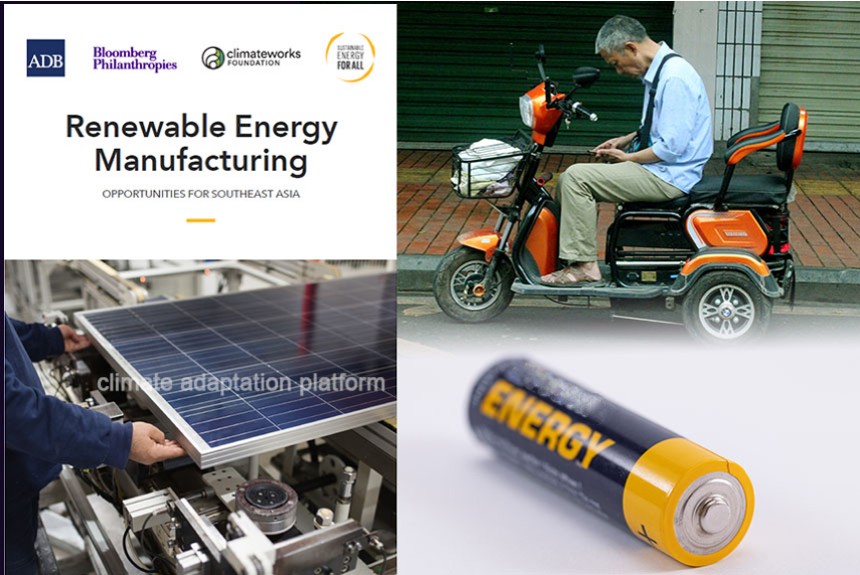Southeast Asia is known as the region that is disproportionately impacted by climate change. Five out of ten countries in the region rank among the world’s top 20 most vulnerable to climate change, and they could lose up to 30% of their GDP by 2050 because of climate change.
But not everything is doom and gloom for the region. A report published by the Asian Development Bank, Bloomberg Philanthropies, ClimateWorks Foundation, and Sustainable Energy for All in August 2023 highlights Southeast Asia’s enormous potential in renewable energy manufacturing across three sectors: solar photovoltaic (PV), batteries, and electric two-wheelers.
The report also explores how to support the development of the clean energy manufacturing sector in the region and help countries reap its immense economic potential while mitigating the impacts of climate change.
According to the report, growing Southeast Asia’s solar photovoltaic (PV) cells, battery, and low-carbon mobility present an estimated $90 to $100 billion in revenues by 2030 and the creation of around 6 million renewable energy jobs by 2050.
The region must reduce GHG emissions by 10% to 25% by 2030 based on its current emissions trajectory to limit warming to 1.5°C. At the same time, the region’s energy consumption is also growing rapidly.
According to the IEA, energy demand is projected to increase by 250% between 2020 and 2050.
A strong effort to electrify transportation and grow renewable energy manufacturing has the potential to achieve dual objectives for the region.
First, it will allow it to meet growing energy demands while reducing emissions, and second, the development of local manufacturing capabilities will support job creation and economic growth.
The report identifies potential ambition and outcomes for Southeast Asia to achieve the following:
- Grow solar PV manufacturing capacity in modules from 70 GW to 125–150 GW by 2030.
- Develop a regional battery manufacturing value chain, increasing national and regional demand, and establish Southeast Asia as a regional and global export hub, producing 140–180 gigawatt-hours (GWh) of battery cells by 2030.
- Expand assembly capacity for electric two-wheelers (E2W) in Southeast Asia from 1.4 to 1.6 million units annually to approximately 4 million units by 2030.
The report also highlights the challenges manufacturers in Southeast Asian countries face and how to address them.
Source:
Renewable Energy Manufacturing in Southeast Asia Can Generate $90 Billion to $100 Billion in Sustainable Revenue by 2030. (2023, August 24). ADB. Retrieved from https://www.adb.org/news/renewable-energy-manufacturing-se-asia-generate-90-billion-100-billion-sustainable-revenue-2030
Renewable Energy Manufacturing. Opportunities for Southeast Asia. (2023). Asian Development Bank, Bloomberg Philanthropies, ClimateWorks Foundation, Sustainable Energy for All. Retrieved from https://www.adb.org/sites/default/files/publication/901536/renewable-energy-manufacturing-opportunities-southeast-asia.pdf



Leave a Reply